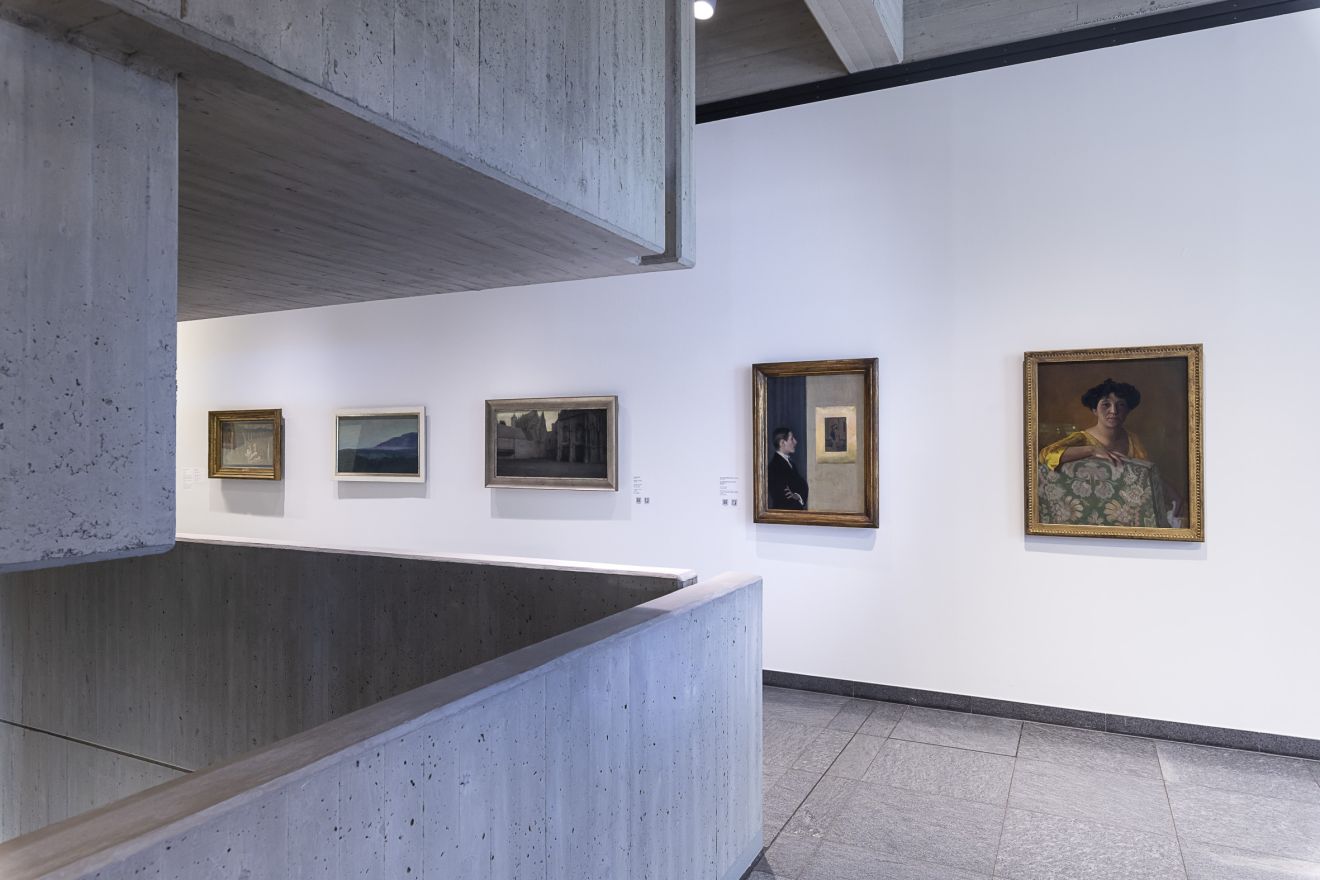From the Middle Ages to colour painting

The Clemens Sels Museum Neuss features a particularly high-quality and diverse collection. The art collection starts at paintings from the Middle Ages and the 17th century Dutch. The Nazarenes and Pre-Raphaelites are also represented with important works. Above all, the works of the Symbolists form a collection that is unique in Germany. Beyond that, the collection includes important pieces of Rhenish Expressionism and Naïve art. The collection is completed by contemporary works of colour painting.
The ancient art department is based on the foundation of Pauline and Dr. Clemens Sels and comprises masterpieces from the Middle Ages to the 18th century.
In the Middle Ages, churches and monasteries were the main commissioners of works of art, which primarily served to convey Christian content in a memorable way.
Dutch painting reached its peak in the 17th century. It is referred to as the Golden Age, during which the Netherlands flourished in terms of politics, economics, science and art. Art became a mirror of social and cultural change.
Another focus of the collection is 19th century German art. It includes paintings by the so-called Nazarenes who sought to renew art from the spirit of Christianity and whose art was one of the sources of inspiration for the Pre-Raphaelites.
In 1848 the Pre-Raphaelite Brotherhood was founded in London. With their symbolically charged colour, in-depth study of nature, and Christian, literary, and socially critical pictorial content, the artists rebelled against neoclassical doctrines and strove to aestheticise all areas of life. The Pre-Raphaelites’ penchant for mysticism, the visualisation of emotions clothed in literary models, and the use of allegorical references place them in close proximity to the Symbolists.
Important Symbolist works form the heart of the collection. Gustave Moreau is considered the “father of Symbolism” who strives for a departure from the natural appearance. A pioneering teacher at the École des Beaux-Arts, he never tired of sharing his revolutionary views on the use of colour: “Colour must be thought, dreamed, imagined.” With his remarkable “colour fantasies”, Moreau anticipated the liberation of colour in the 20th century. The Symbolists strive to make their art reflect the soul and the subconscious, dreams and visions through the intrinsic value of colour and the language of symbols.
After Dresden, Berlin and Munich, the Rhineland is another centre of Expressionism in Germany. After the artists of the “Brücke” and the “Blaue Reiter” had joined forces, the Rhenish Expressionists formed in Bonn in 1913. In their search for new visual expression, they are united by an expressive visual language and their proximity to French art, which leads to Fauvist tendencies. August Macke, Heinrich Campendonk, Max Ernst and Heinrich Nauen are among the leading protagonists represented with important works in the collection of the Clemens Sels Museum Neuss. The outbreak of World War I brought the vital art scene in the Rhineland to a standstill.
The Clemens Sels Museum Neuss owns an extensive collection of authentic Naïve art. The works of the self-taught artists, whose individual style developed free of academic conventions, offer an original, often visionary view of the world around them. It is the art of Henri Rousseau, the painting customs officer, that aroused great interest with the avant-garde. In Germany, Adalbert Trillhaase is considered the “German Rousseau”. German gallery owner Wilhelm Uhde was the first collector to become involved with amateur painting in France. Among the painters he supported were Camille Bombois, André Bauchant, Séraphine Louis and Louis Vivin. Polish Naïve artists are also represented in the collection with numerous paintings and sculptures.
The Clemens Sels Museum Neuss features an extensive colour painting collection. It includes paintings and sculptures by international artists such as Marcia Hafif and Phil Sims as well as by important Germans such as Katharina Grosse, Dieter Villinger, Markus Linnenbrink, Paul Schwer and Camill Leberer. The collection is regularly expanded through purchases and donations. Due to its quality, this area has a dedicated exhibition floor on the ground level. In addition to the changing presentation of the museum's own holdings, artists are invited to develop a site-specific concept. The interplay of art and architecture creates imaginary colour spaces that sensitise perception and sensation to the power and diverse effects of colour.